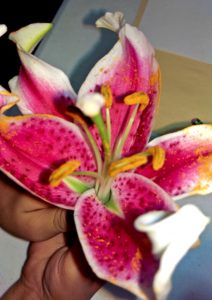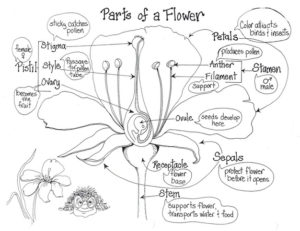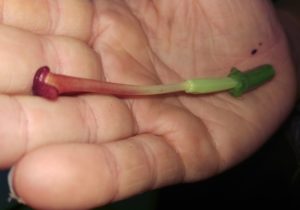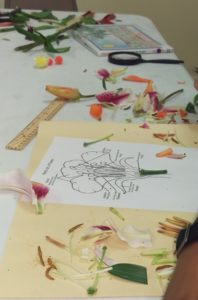In biology, we often use the phrase form equals function, which means that, within an organism, structures are formed in direct correlation to what they are meant to do. A biological function is the reason some object or process occurred in a system that evolved through a process of selection or natural selection.
So when we study the flower, students should see first-hand the “form” of each part. Then it is much easier and intuitive to understand the function.
We used lilies from the supermarket for this lab. They have large parts that are easy to see.

Materials:
1. Lilies with stamen intact (these are often removed at flower shops as the pollen is messy).
2. Small, sharp scissors (nail scissors work great).
3. A diagram showing the parts of the flower (there is an example below, but there are tons on the internet to choose from).

Procedure:
- Distribute flowers and diagrams to each student (or student pairs).
- Carefully deconstruct flowers, identifying each part on the diagram.
- Discuss each part’s form and function. Use this awesome interactive website from DK, Parts of a Flower, to help!


